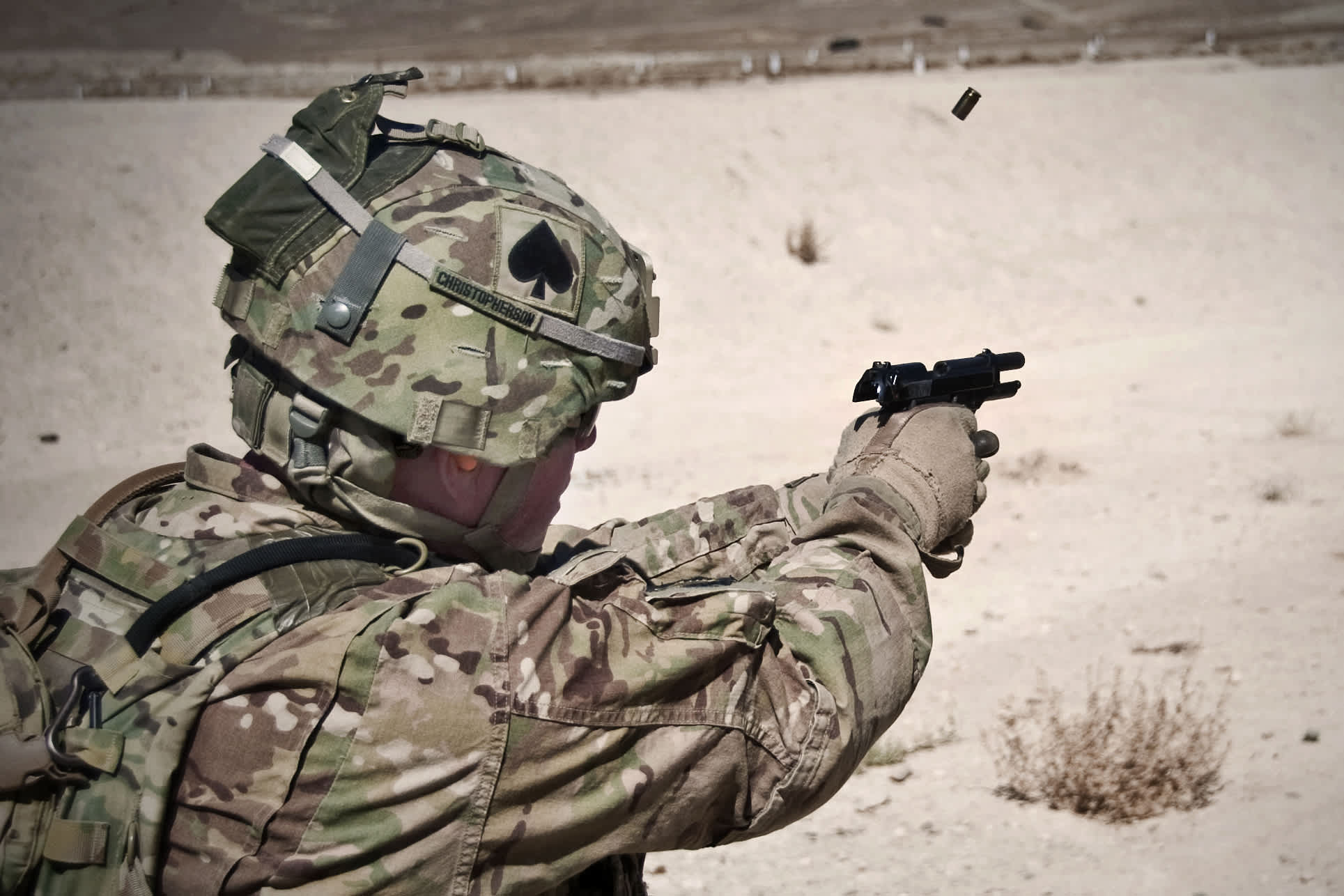US Army to Seek New Service Handgun
OutdoorHub Reporters 07.08.14

The US Army has officially indicated that it is potentially looking to replace more than 200,000 Beretta M9 pistols currently in service with a more powerful and precise firearm. According to Military.com, the Army will be holding a meeting with major gun makers later this month to talk about the Modular Handgun System (MHS), a project that is aimed at providing soldiers with a more effective handgun.
“It’s a total system replacement—new gun, new ammo, new holster, everything,” said Daryl Easlick, a project officer at the Fort Benning Army Maneuver Center of Excellence.
One of the objectives of the MHS is to replace the M9, which is chambered in 9x19mm, with a handgun capable of firing more powerful ammunition. One complaint common among soldiers is that the 9x19mm round is underpowered compared to other calibers. The US Army adopted the M9 in 1985 when Beretta won a competition to replace the venerable M1911A1 chambered in .45 ACP, which had served as the standard-issue sidearm for many branches of the US Armed Forces since 1911. At the time, replacing the larger-caliber 1911 with the Beretta M9 was controversial. To this day, many are still calling for the return of the M1911 pistol due to its perceived greater “stopping power.”
The Washington Times reported that the Army does intend on evaluating firearms chambered in .45 ACP during the selection process, as well as .357 SIG and .40 S&W. According to Guns.com, the MHS is also looking for a firearm that is less high-maintenance than the current M9. This would include a handgun that has a closed slide and no slide-mounted safety—two factors that disqualified the M9 from MHS competition.
“The M9 doesn’t meet it for a multitude of reasons,” Easlick told Military.com. “It’s got reliability issues; the open slide design allows contaminates [sic] in. The slide-mounted safety doesn’t do well when you are trying to clear a stoppage—you inadvertently de-cock and safe the weapon system.”
The M9 does have its supporters, especially those who have become familiar with the weapon. Critics of the MHS claim that shot placement matters more than bullet size, and that the 9x19mm round allows for larger magazine capacities. Others question the need to replace over 200,000 working handguns with new models in a time when the military is tightening its belt with budget cuts. However, Easlick insisted that it would cost more to repair and maintain the Army’s aging collection of M9 pistols.
If the MHS ends in a new handgun being chosen, the Defense Department could end up buying more than 400,000 new sidearms for service members.

